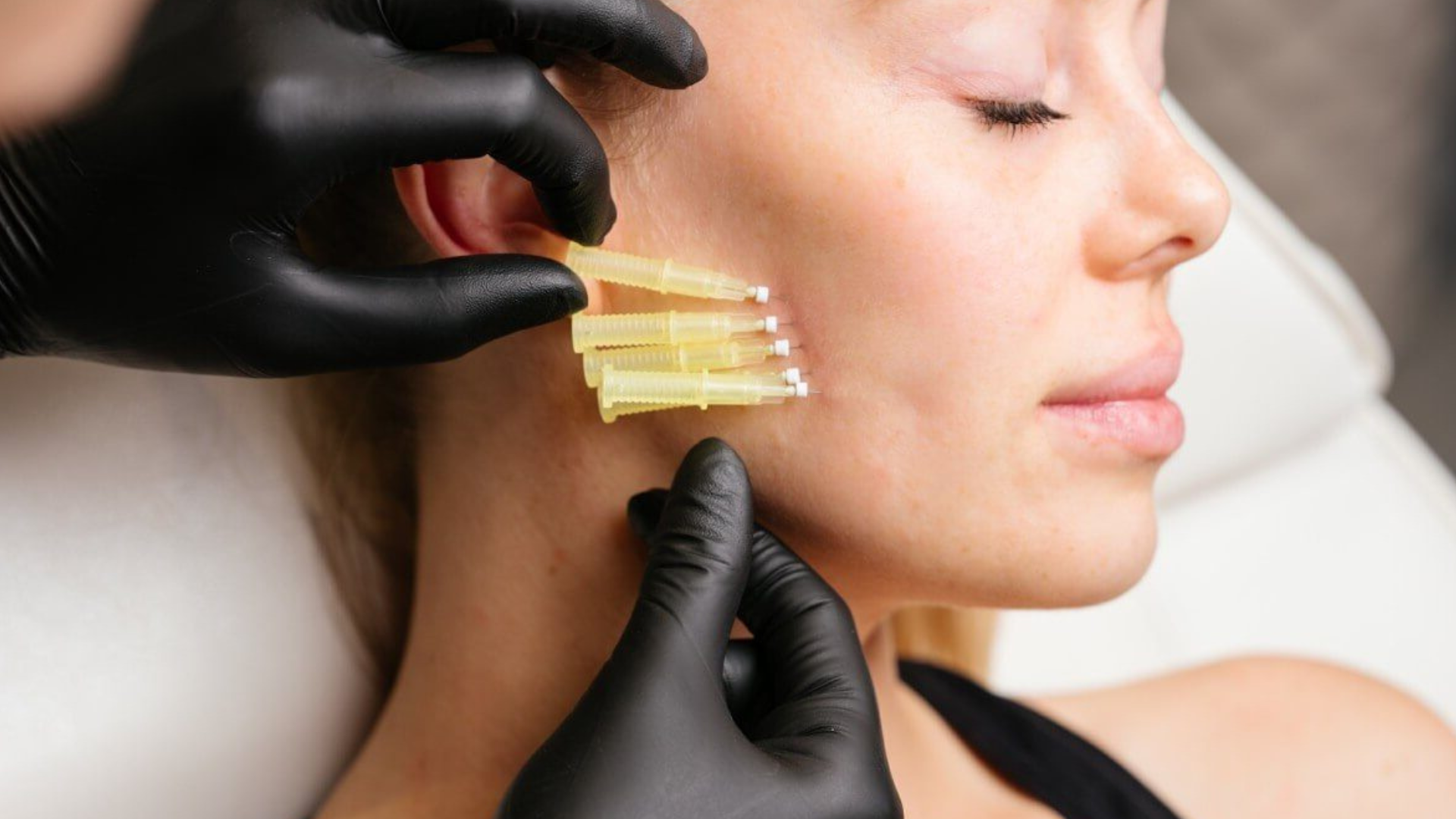PDO Threads

PDO (Polydioxanone) threads are a type of medical suture material that has been used in various medical fields for years. In recent times, they have gained popularity in the field of cosmetic and aesthetic medicine. PDO threads are used for minimally invasive facial rejuvenation procedures.
PDO threads are commonly used for facial treatments, addressing concerns such as sagging cheeks, jawline definition, and reducing wrinkles. They are considered a minimally invasive alternative to surgical facelifts, with less downtime and lower risks compared to traditional surgical procedures.
You will meet with me face to face.
This is where we'd talk about your worries and what you want to happen.
I inject a small amount of anaesthetic into the area which is going to be treated.
Once the area is numb, I will insert PDO threads under the skin using a fine needle or cannula. These threads are inserted at different depths, depending on the specific treatment goals.
PDO threads have a special design with tiny barbs or cones that grip and lift sagging skin. They provide an immediate lifting effect by physically supporting and repositioning the tissue. I also use mono threads and screw threads which assist in supporting the skin to smooth out the texture and increase volume.
The duration of the results from PDO (Polydioxanone) thread treatments can vary from person to person and depends on several factors, including the type of PDO threads used, individual skin characteristics, and the specific treatment area. In general, the effects of PDO threads are temporary, and they typically last anywhere from 6 months to 2 years.
PDO (Polydioxanone) thread treatments are generally considered safe when performed by qualified and experienced healthcare professionals. However, like any medical or cosmetic procedure, there can be potential side effects and risks associated with PDO thread treatments. These side effects may include:
Temporary Bruising and Swelling: It's common to experience some bruising and swelling at the treatment site, which typically subsides within a few days to a week.
Discomfort or Pain: Some patients may experience discomfort or mild pain at the insertion points, which can be managed with over-the-counter pain relievers or as recommended by the healthcare provider.
Redness: Temporary redness at the treatment site is normal and usually resolves within a few days.
Infection: While infections are rare, there is a minimal risk of infection at the insertion points. It's crucial to follow post-treatment care instructions to minimize this risk.
Nodules or Bumps: In some cases, patients may develop small nodules or bumps at the treatment site. These are typically temporary and can be treated by a healthcare provider.
Thread Migration or Extrusion: In rare cases, PDO threads can migrate from their original placement or become visible through the skin. This may require correction or removal by a medical professional.
Allergic Reactions: Allergic reactions to PDO threads are extremely rare. However, it's essential to inform your healthcare provider of any known allergies before the procedure.
Asymmetry or Uneven Results: Achieving perfectly symmetrical results can be challenging, and there is a risk of slight asymmetry. It's important to have realistic expectations and communicate your goals with your provider.
Dimpling or Irregularities: In some cases, patients may notice skin irregularities or dimpling after the procedure, which can be addressed by a healthcare provider.
Rare Complications: While very uncommon, there have been reports of more severe complications, such as nerve injury, blood vessel damage, or granuloma formation. These are rare but underscore the importance of choosing a highly skilled and experienced practitioner.
To minimize the risk of side effects and complications, it's crucial to choose a reputable and qualified healthcare provider for your PDO thread treatment. They can assess your suitability for the procedure, discuss potential risks, and provide you with proper aftercare instructions. It's also essential to communicate openly with your provider about your goals and concerns to ensure the best possible outcome.
PDO Threads are commonly used to:
- Create a cat eye lifting effect
- Tighten and lift the cheeks
- Reduce the signs of nasolabial folds
- Tighten the jawline
- Lift, midface and lower face
- Improve skin, texture and appearance on all areas of the body
